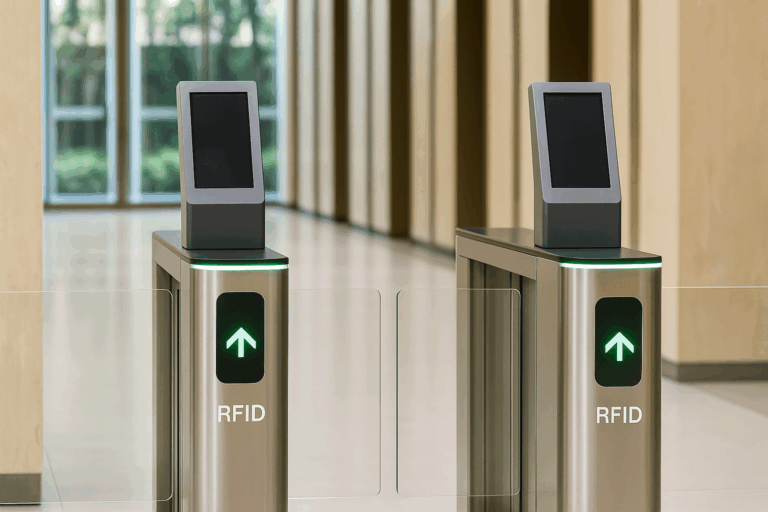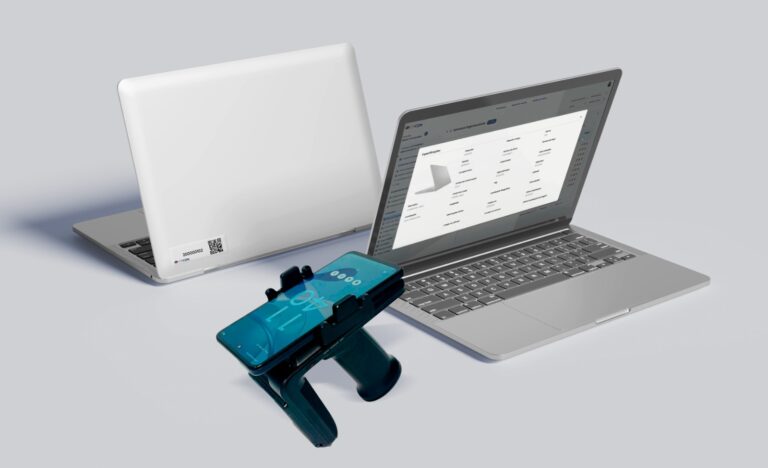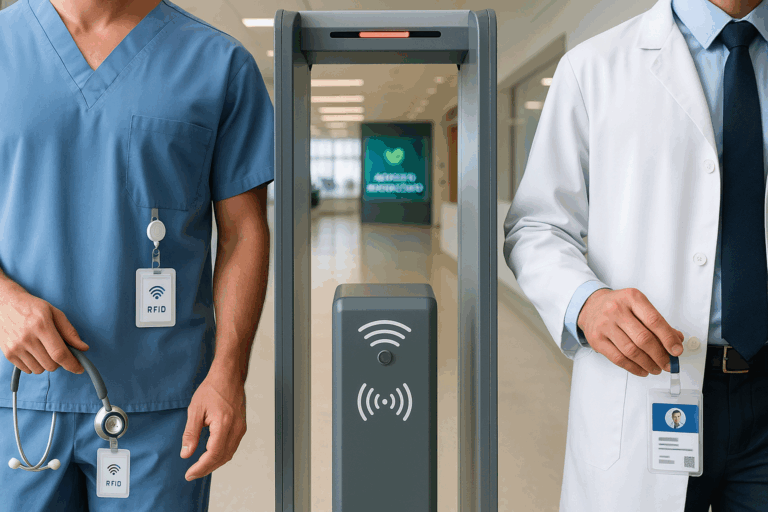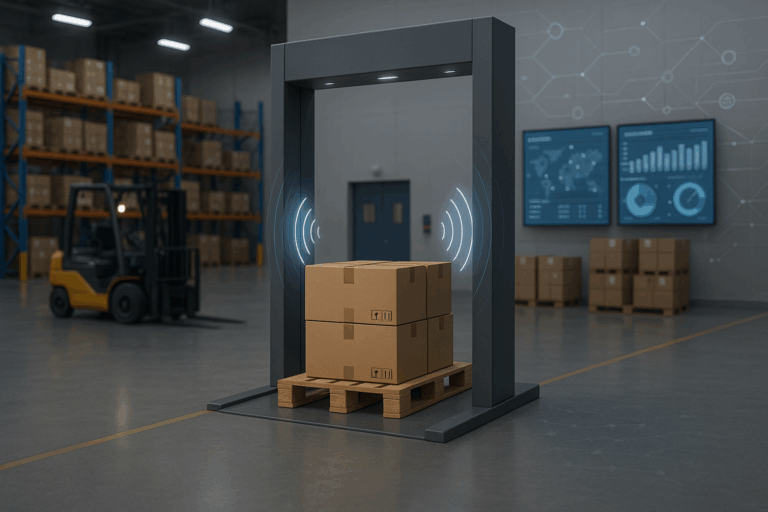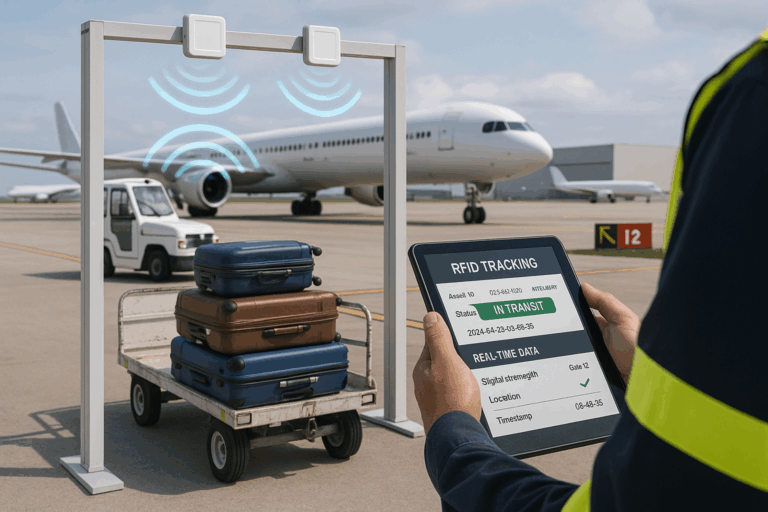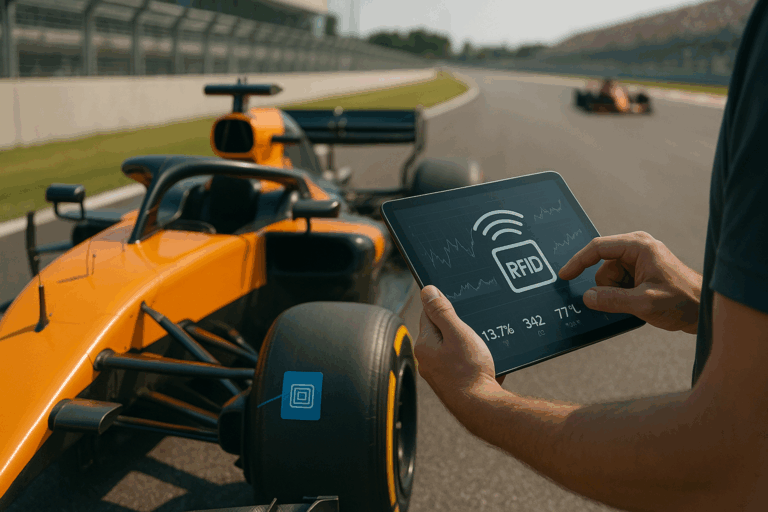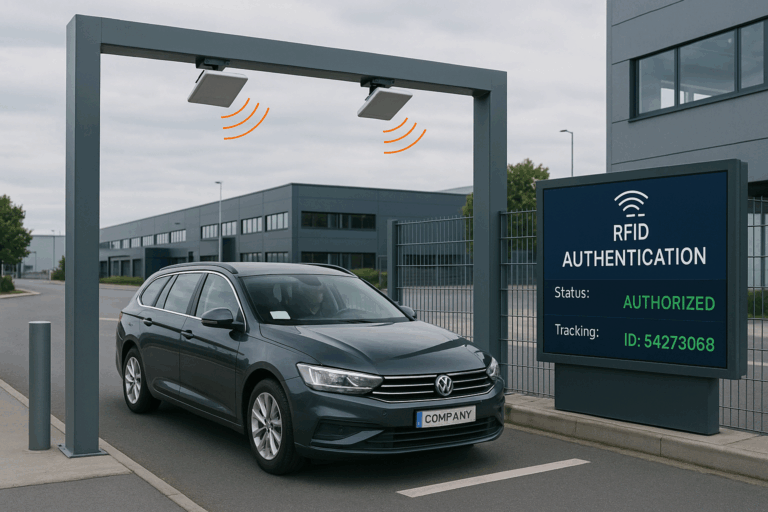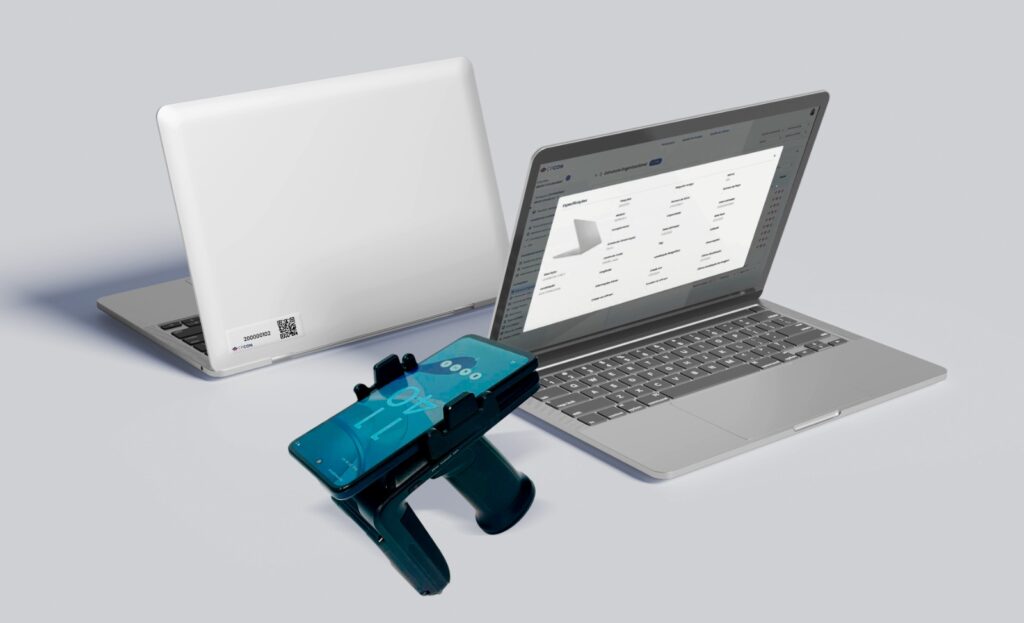RFID clothing tags are not just a technological upgrade: they are redefining how retailers manage inventory, reduce operational risks, and deliver smarter shopping experiences. By embedding real-time data capabilities into each garment, these tags offer visibility, precision, and agility at every stage of the retail journey.
This technology emerged in response to a pressing need: the retail industry’s chronic struggle with inaccurate stock levels, theft, and disconnected customer experiences. With global brands like Nike, Zara, and H&M leading the way, RFID has proven its ability to transform inventory accuracy from 65% to over 98%, while enabling automated checkouts, interactive fitting rooms, and frictionless omnichannel operations.
Strategically, adopting RFID clothing tags means more than upgrading infrastructure. For retailers operating at scale, every lost sale due to out-of-stock items or every delay in restocking represents lost revenue and eroded customer trust.
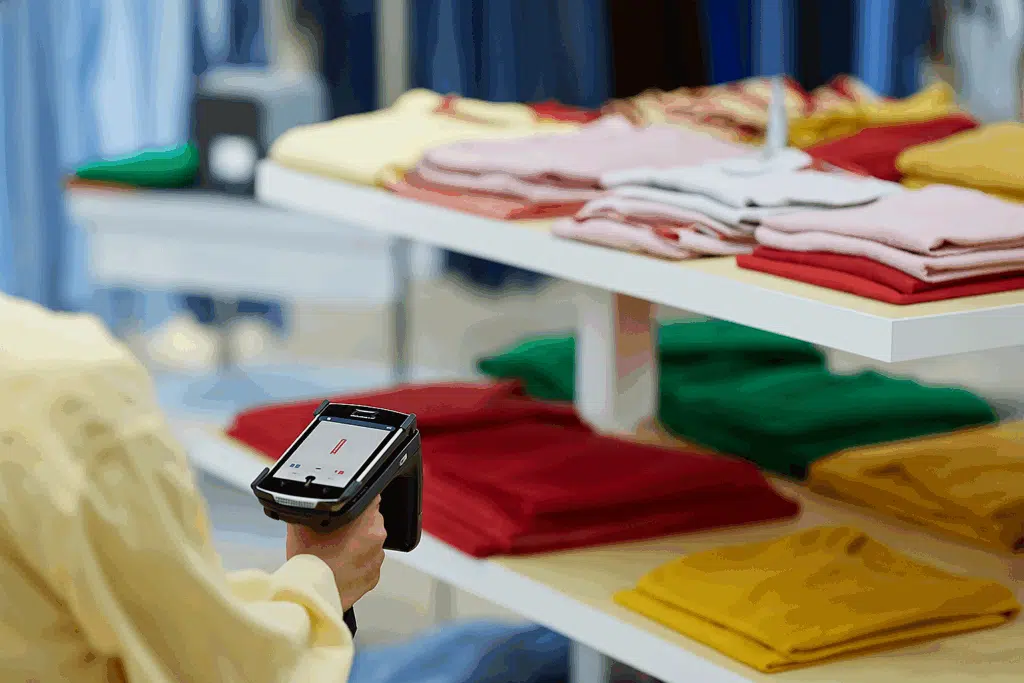
Table of Contents
ToggleWhat are RFID clothing tags and why they matter in retail
RFID clothing tags are small, smart labels attached to garments that use radio frequency signals to store and transmit data. These tags allow retailers to track items automatically, without needing a direct line of sight, unlike traditional barcodes.
The main reason RFID matters in retail is its ability to make operations faster, more accurate, and more connected. By placing RFID tags on clothing, retailers gain real-time visibility over their inventory. This reduces human error, speeds up restocking, and improves product availability on the sales floor.
For shoppers, RFID makes the experience smoother. It enables features like self-checkout, smart fitting rooms, and instant product information with a simple scan. For retailers, it means fewer stockouts, better loss prevention, and stronger supply chain control.
In short, RFID clothing tags help bridge the gap between physical stores and digital systems. They support both operational efficiency and better customer experiences, making them a critical tool for modern retail success.
The strategic impact of RFID on fashion retail operations
RFID technology replaces manual processes with automation, allowing for faster decisions and fewer errors across the entire operation.
One of the biggest impacts is inventory accuracy. With RFID, stores can reach accuracy levels close to 99%, compared to 65 to 70 percent with traditional methods. This means fewer out-of-stock situations, better planning, and stronger alignment between demand and supply.
In warehouses, RFID helps reduce cycle counting times and improves product flow. In stores, it gives staff instant access to stock data, making it easier to locate items, assist customers, and manage replenishment. For omnichannel operations, RFID ensures that systems reflect what is really available in real time.
Retailers also gain insights from the data collected by RFID tags. They can analyze which items are tried on but not purchased, which products move faster, and how customers interact with merchandise. These insights support better merchandising, pricing, and promotion strategies.
By connecting products, people and data, RFID supports a more agile and intelligent operation. It empowers retailers to adapt faster, reduce costs, and improve customer satisfaction through precision and speed.
Proven benefits of RFID for retailers and customers
The adoption of RFID clothing tags brings measurable benefits for both retailers and consumers. These improvements go beyond basic stock control and support smarter, faster, and more personalized retail operations.
Inventory accuracy that drives profitability
With RFID, inventory counts become more frequent and precise. This reduces stock discrepancies, lowers shrinkage, and ensures that the right products are always available. Accurate inventory prevents overstock and stockouts, which directly impacts revenue and customer satisfaction.
Many retailers report improvements from 68 to 98 percent accuracy after implementing RFID.
Faster checkout and more convenience for customers
RFID speeds up the checkout process by allowing items to be scanned automatically in bulk. Customers no longer need to wait in long lines, and stores can offer self-service options with ease. In some cases, checkout times have been reduced by half.
This improvement leads to a more enjoyable shopping experience and encourages repeat visits. Customers value speed and efficiency, especially in high-traffic locations and during peak seasons.
Enhanced personalization and smarter fitting rooms
Smart fitting rooms equipped with RFID readers can recognize items as soon as they are brought in. Screens display available sizes, color options, and even product suggestions based on what the customer is trying on.
This personalized experience increases engagement and conversion rates. Retailers also gain valuable data about customer preferences, which helps optimize merchandising and tailor future campaigns.

Real-world applications: how global brands use RFID to stay ahead
Major retailers have recently scaled RFID initiatives to improve inventory accuracy, enhance customer experience and support seamless omnichannel operations.
Hugo Boss introduced RFID-powered smart fitting rooms in its flagship stores in Düsseldorf, London, Dubai and Tokyo. These rooms detect items instantly, allow customers to request new sizes from store staff, and provide product recommendations. As reported by Business of Fashion (2024), this led to higher conversion rates and more efficient service during peak hours.
River Island continues to expand its use of RFID with Crave Retail’s interactive fitting room technology. The company has tracked a 30% to 35% sales increase in RFID-enabled stores and uses the data to optimize product suggestions and prevent shrinkage. According to Crave Retail (2024), similar solutions are also in place at Victoria’s Secret, Under Armour and Good American, showing strong adoption across fashion segments.
These recent cases confirm that RFID is no longer an experimental tool. It is a core driver of performance, used by brands to streamline operations, reduce errors and build stronger connections with customers.
RFID and omnichannel: the key to unified shopping journeys
RFID technology plays a crucial role in enabling real-time inventory visibility across physical stores, e-commerce platforms, and distribution centers. This level of control supports faster deliveries, fewer errors, and a more consistent shopping experience.
Levi’s has equipped 100% of its U.S. stores with RFID and is expanding the technology to over 3,000 locations worldwide. According to Avery Dennison, the company has already tagged more than 50 million products with UHF RFID to support global omnichannel operations.
Zara, part of the Inditex Group, uses RFID to keep inventory synchronized between its physical and online stores. This allows customers to view real-time product availability and ensures that fulfillment can happen from any location.
When properly implemented, RFID enhances services like Ship from Store, Click & Collect, and Buy Online Return In-Store. These capabilities reduce delivery times, simplify returns, and minimize stockouts—benefiting both customer satisfaction and operational efficiency.
CPCON’s RFID methodology: solving real retail challenges with tailored solutions
Deploying RFID in retail involves more than installing tags and readers. It requires solving operational gaps, integrating systems, and engaging teams. CPCON Group addresses these challenges with a practical and tested methodology.
One of the most common issues is system integration. Many retailers still use legacy ERPs and inventory platforms that don’t communicate well with RFID. CPCON delivers full integration support, using middleware and APIs to ensure real-time data flow across all systems.
Another challenge is team adoption. Without proper training, RFID tools may be underused or misapplied. CPCON prepares in-store teams and IT departments with hands-on training and continuous support. Staff learn how to scan, interpret data, and apply insights in daily routines.
Many retailers also hesitate due to cost concerns. CPCON helps model ROI based on expected gains in inventory accuracy, labor efficiency, and reduced losses. Most projects show return within 18 to 24 months, based on real client results.
Each RFID solution is tailored. We analyze store layout, product categories, and operational goals to define the best strategy. Implementation is phased, starting with pilot stores and expanding based on measurable outcomes.
CPCON combines deep technical knowledge with decades of retail experience. Our goal is simple: make RFID work in practice, not just in theory. We focus on results, efficiency, and long-term impact for your business.
Emerging trends: wearable RFID tags and smart clothing
RFID technology is evolving beyond product tracking. Fashion brands are now exploring wearable RFID applications that connect garments with digital experiences, adding value to both consumers and retailers.
Some clothing lines are using RFID to offer post-purchase features. Customers can scan tags with their phones to access care instructions, brand stories or exclusive content. This builds brand engagement and adds transparency about materials and sourcing.
At Adidas, RFID tags are integrated into production at the Speedfactory. This allows real-time tracking from manufacturing to point of sale, helping the company optimize distribution and reduce lead times. Zara uses wearable tags to improve restocking speed and store accuracy.
Other innovations include pairing RFID with smart mirrors and AR displays. Brands like Tommy Jeans and Nike are testing fitting rooms that suggest items, show available sizes and connect customers with digital lookbooks. This creates a more interactive and personalized shopping journey.
Wearable RFID also supports sustainability. By tracking garments throughout their life cycle, brands can improve recycling processes and comply with digital product passport regulations in Europe.
As these trends grow, RFID moves from being a backend logistics tool to a key part of customer experience and product intelligence. Retailers who adopt this mindset gain an edge in innovation and engagement.
Sustainability and transparency: RFID as a driver of green fashion
RFID enables item-level tracking from factory to customer, reducing overproduction and waste while improving supply chain transparency. This level of traceability gives retailers better control over inventory and supports responsible sourcing.
According to Avery Dennison, RFID has helped global brands accelerate textile recycling by enabling more precise sorting, reducing fabric waste, and supporting circular supply chain models. The company highlights that digital product identities linked to RFID make recycling processes more scalable and efficient.
Brands like H&M and Zara are already using RFID to support their goals of reaching 100% sustainable materials and adopting circular fashion practices. These brands rely on RFID to monitor product origin, track materials used, and manage end-of-life recovery strategies.
In Europe, new regulations like the Digital Product Passport (DPP) will require brands to provide information about product composition, manufacturing, and recyclability. RFID makes it possible to link each item to its digital profile, enabling brands to comply with transparency and traceability standards.
Some companies are also developing RFID tags made from recycled or compostable materials, helping reduce the environmental impact of the technology itself and aligning with eco-conscious packaging.
By using RFID as a foundation for sustainability, fashion retailers move beyond marketing claims and gain real control over their environmental performance.
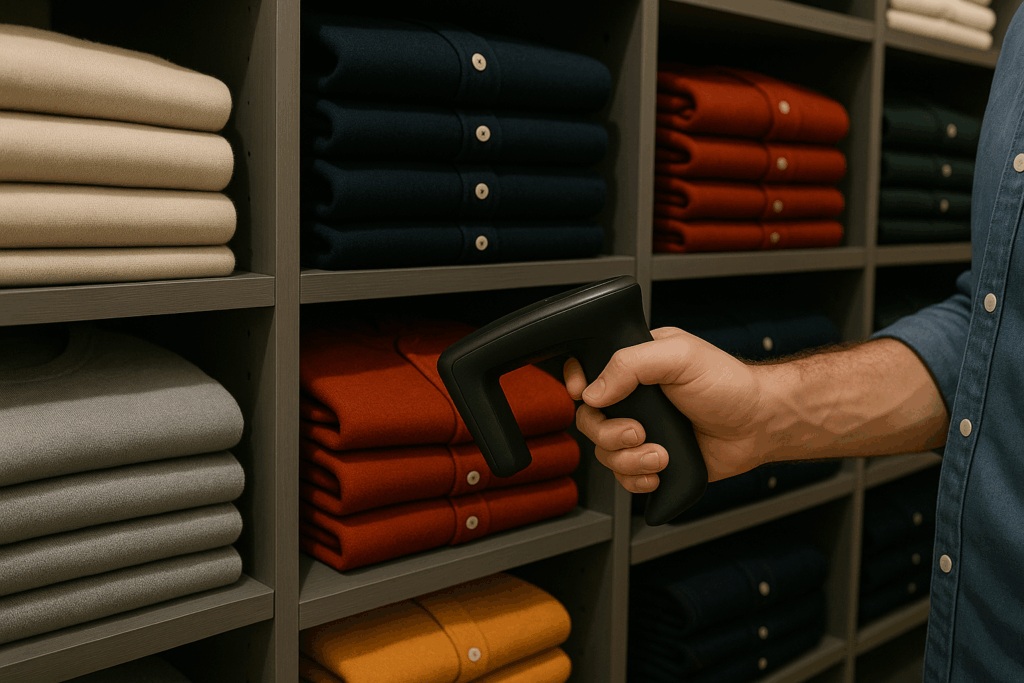
ROI, costs and global standards: what decision makers need to know
Implementing RFID in retail requires an initial investment, but the return is measurable and often rapid. Most retailers report ROI within 18 to 24 months, especially when focusing on shrinkage reduction, labor savings and improved product availability.
RFID tags typically cost between $0.10 and $0.50, depending on volume and specifications. Additional costs include readers, antennas, and software integration. However, these costs are offset by gains in operational efficiency.
CPCON helps clients assess these numbers early in the process. Using real operational data, we simulate cost reduction and revenue impact, allowing decision makers to plan investment with confidence.
Compliance with global RFID standards is also critical. CPCON’s solutions follow the GS1 EPCglobal standards, which ensure interoperability across manufacturers, retailers, and logistics providers. This alignment supports smooth data sharing, consistent performance, and regulatory compliance worldwide. For a deeper overview, GS1 provides detailed documentation at gs1.org.
When RFID is implemented strategically, the return goes far beyond inventory control. It enhances planning, reduces losses, and supports sustainable growth—making it a smart long-term decision for any retail leader.
Explore our blog for expert insights, real-world applications and strategic guidance to help your business grow with precision, control and innovation.
RFID in fashion retail: from operational tool to strategic advantage
RFID has become a cornerstone of modern retail strategy. It brings precision to inventory management, connects physical and digital experiences, and unlocks deeper insights into customer behavior and operational performance.
Retailers who adopt RFID gain more than efficiency. They gain agility, reliability, and the ability to scale smarter. From fast restocking to seamless omnichannel fulfillment, the technology supports a more connected and profitable business model.
Talk to one of our specialists and discover how CPCON can help you improve inventory control, reduce losses and deliver a better customer experience with precision and intelligence.
FAQ
How do RFID clothing tags work in retail?
RFID tags store product information and transmit it via radio waves. This allows retailers to track inventory in real time without manual scanning.
What are the main benefits of using RFID in fashion stores?
RFID improves inventory accuracy, reduces stockouts, speeds up restocking, and enables features like smart fitting rooms and self-checkout.
Is RFID technology secure for customer data?
Yes. RFID tags used in retail typically contain product-related data only. When needed, encryption and deactivation protocols ensure privacy and security.
How much does it cost to implement RFID in a retail chain?
Costs vary based on store size and system complexity. Tags range from $0.10 to $0.50, with additional investments in readers, antennas, and software integration.
Get to Know CPCON Group: A global expert in asset management and inventory solutions
CPCON Group is a global leader in asset management, fixed asset control, and RFID technology. With over 25 years of experience, we have supported major companies such as Nestlé, Pfizer, Scania, BASF, Coca-Cola Andina, Vale, Vivo, Petrobras, and Caixa in high-complexity projects.
Curious about our global footprint? We are present in:
- North America: Toronto, New York, Miami, Minneapolis, Seattle, Dallas
- Latin America: São Paulo, Buenos Aires, Lima, Bogotá, Mexico City
- Europe: Lisbon, Porto, London, Birmingham, Milan, Rome, Turin, Madrid, Bilbao
- Middle East: Dubai, Saudi Arabi
- Caribbean: Tortola, Grand Cayman
Follow our LinkedIn Showcase Page and stay updated with strategic content on asset control, inventory management, and RFID innovation across industries.
RFID clothing tags are transforming fashion retail by improving inventory accuracy, reducing losses and enabling personalized customer experiences. Global brands like Levi’s, Zara and H&M have adopted RFID to streamline operations and support sustainability goals. The technology enhances omnichannel strategies, increases stock visibility, and delivers measurable ROI within two years. With tailored implementation, RFID becomes a powerful tool for efficiency, transparency and growth in retail.



